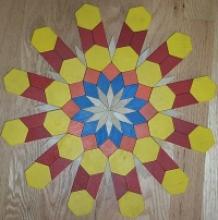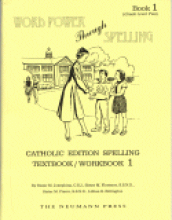No name
William Shakespeare's The Tempest
Winter Danger
As an adventure and historical tale, this is a great read, but it offers a deeper level too. The story touches upon some very essential points about the purpose of civilization, family and loving one's neighbor. This is a fairly easy read for 2nd or 3rd grade and up but would also make a great read-aloud.
Witness to Hope
In what is being widely hailed as the definitive biography of Pope John Paul II, faithful Roman Catholic theologian and journalist George Weigel presents a thorough look at Pope John Paul II from the inside. With a rich complement of Polish history and in-depth coverage of the Holy Father's cultural, philsophical and spiritual background, he portrays a vivid and accurate picture of who the Pope really is and what he's trying to accomplish (and has already accomplished) as the Vicar of Christ. A long and moderately difficult read (the base text is about 850 pages followed by approximately 150 pages of footnotes, appendices and a thorough index) it's the sort of book that would not be required reading for every high school student, but would make excellent reading for those brave enough to attempt it and required reading for adults trying to understand where the Holy Father comes from. The book touches upon many major issues and events of the 20th century (including World War II and the fall of Communist Russia) as well as an in-depth look at the history and culture of Poland going back many centuries. Includes 32 pages of photographs (the more recent ones in full color).
Click here for a review of this book written by Cardinal Avery Dulles (from First Things)
Widely available used and in bookstores and discount stores everywhere as well as the sources listed below. The audio book is excellent as well.
Wooden Pattern Blocks
These beautiful wooden blocks are about 1/8th of an inch thick and come in six different shapes (each shape is a different color).They can be fitted together to make beautiful patterns and designs. We've been using them for many years and they've been a hit with every one of my children. They're fun and beautiful and promote fine-motor skills, eye-hand coordination (intricate patterns can be too frustrating to really young children) and visualization and thinking skills. One way I use them with my kindergarteners is this: the child and I will each start a pattern or design and then switch so that the other one has to finish it. The wooden set has such a nice feel to it - playing with it is so relaxing and peaceful for young children (especially while you're trying to work on academics with older siblings.
Available in various materials, sizes and quantities - we prefer the wooden set.
Wooden Rosary Holder Kit from Illuminated Ink
Word Power Through Spelling: Catholic Edition
First Lesson Word List: a, big, dog, is, my Final Lesson Word List: way, glad, happy, how, ten, stand, very, name, walked, train Weekly lessons introduce a new word list (the number of words in the list increase as the book progresses) and gives practice writing and recognizing the words in the context of sentences and to describe illustrations. Some handwriting practice is included (including a page with directions for printing, and later in the text one for writing cursive letters). The text works a bit on the meaning of words but doesn't get into phonetic rules. A special format for keeping track of and practicing problem words allows the student to additional review throughout the text for problem areas. There are some instructions to the teacher at the beginning of the book which outline "how to study a missed word" and how the lesson plan is supposed to work. Directions to the students are intermixed with the text, but I found it difficult in a few places to determine what was to be done.
The text reminds me of the Rod and Staff workbooks, but with some Catholic content.
Word to Caesar
World War II for Kids
The tone of the entire book is pro-American and patriotic. I particularly enjoyed the author's nostalgic reflections on some of the more wholesome entertainers of the day - like Bud Abbott and Lou Costello. First-hand accounts of various parts of life at that time are scattered throughout the book and cover an impressive array of nationalities. The 21 activities advertised in the title are very creative, but not overwhelming. Some of my favorites include: Decoding a Message, Rationing Game, and Make a Ration Kit (this is very detailed and fascinating).
This book would be particularly interesting for a family interested in delving deeper into World War II than the history textbooks do. It gives a great, but easy-to-use overview of the whole war chronologically (I learned a lot from reading it myself!). Combined with a dozen or so living history books, this could make a fun summer project or unit study for the entire family.
The author has done a fine balancing job in keeping the material appropriate for children without watering it down. However, there are a few areas that might be inappropriate for younger children - particularly the segment on the Holocaust.
Woven Cross Kit from Illuminated Ink
The Woven Cross Kit provides materials for three beautiful woven crosses. Each kit comes with thin strips of vellum paper 3 ½” x 3” (The primary kit colors are green, purple, and black with gold accents), gold rhinestuds, red metal hearts, and step-by-step illustrated instructions. The quality and beauty of the materials are impressive. The project also comes in in a Pastel kit.








